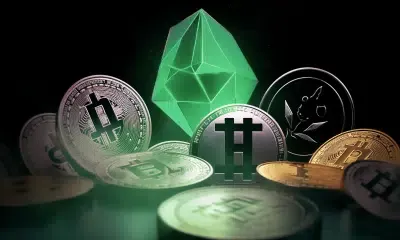
How Fast is Tron, Really? What Makes It Tick, and Why It Matters
In the cutthroat world of blockchain, where speed often means survival, Tron (TRX) has always pitched itself as the quick, affordable option. But just how fast is Tron, really? What’s the actual story behind Tron’s speed? Let’s pull apart how its quickness is measured, see how it handles itself in the wild, explore the design choices that give it that zip, and size it up against the competition, all while keeping in mind its sometimes-bumpy reputation.
Figuring Out Blockchain Speed: It’s More Than Just TPS
When you’re trying to gauge how fast a blockchain is, “Transactions Per Second” (TPS) isn’t the whole story, even though it’s the number people talk about most. To really get it, you need to consider a few things:
- Transactions Per Second (TPS): This tells you how many deals a network can theoretically juggle every second. A bigger TPS number usually points to a network that can handle more growth. Just remember, what’s splashed in ads (the dream TPS) can be very different from the real, everyday speed you see on the live network.
- Block Time: This is just how long it usually takes for a new “page” or block of confirmed transactions to be tacked onto the blockchain. Generally, the faster the block time, the quicker your transaction gets its first thumbs-up.
- Time-to-Finality (TTF): For anyone using the blockchain, this might be the most important number. TTF is the wait time until your transaction is absolutely, positively locked in and can’t be reversed. This is super important for things like financial deals where you need to be 100% sure.
Tron’s Speed Report: The Lowdown
Tron’s design, which uses a Delegated Proof-of-Stake (DPoS) system to agree on transactions, is specifically built to be fast.
- Transactions Per Second (TPS): Tron has often said it could hit around 2,000 TPS. Some checks in 2024 found that while the dream number is high, the actual average TPS was more like 85 to 159.6. Even so, it’s been consistently handling a massive amount of daily transactions, pushing past 8 million every day since February 2025. It’s good to know that a hefty chunk of Tron’s daily business comes from stablecoins, especially USDT, being moved around.
- Block Time: Tron keeps things moving with new blocks appearing roughly every 3 seconds. This helps get transactions bundled into blocks pretty swiftly.
- Time-to-Finality (TTF): So, your transaction might pop into a block in 3 seconds, but for it to be completely settled and unchangeable on Tron, it generally needs about 19 of these blocks to pass. With blocks every 3 seconds, that means you’re looking at about 57 seconds to a minute before it’s truly final.
What’s Under the Hood: Delegated Proof-of-Stake (DPoS)
Tron gets its speed mainly from its DPoS setup. People who hold TRX tokens get to vote for 27 Super Representatives (SRs). These SRs are the ones validating transactions and creating new blocks. Having a small, fixed group of 27 validators, unlike Bitcoin or Ethereum (which now uses Proof-of-Stake), makes reaching an agreement and producing blocks much quicker. SRs earn rewards for making blocks (16 TRX per block right now) and for being voted in (a shared pool of 160 TRX per block), which keeps them interested in running the network well. These elections happen every six hours, which keeps things dynamic and makes SRs accountable.
This setup also uses a resource system called Bandwidth and Energy. People can “freeze” their TRX to get these resources, which they then use up for transactions and running smart contracts. This often means transactions cost very little TRX, or sometimes nothing at all.
A Quick Trip Down Memory Lane: Big Steps and Expansion
Tron first appeared in 2017, with its main network launching in May 2018. By July 2018, there were already reports of it hitting 2,000 TPS, which was way faster than Ethereum at that point. Major updates, like TRON 4.0 in July 2020, and several “Great Voyage” updates, including v4.7.2 (Periander) in July 2023 and v4.7.7 (Epicurus) in November 2024, have aimed to boost privacy, help it work with other blockchains, improve staking, and generally make the network run better.
The network has definitely shown it can manage huge spikes in transaction numbers, especially thanks to the massive growth in USDT transfers. Since early 2025, daily transactions have regularly topped 8 million, sometimes even hitting over 10 million, proving that plenty of people are using it and the network can take the heat.
Tron vs. The Other Big Names: A Speed Showdown
In the blockchain world, being fast and cheap is a major selling point:
- Ethereum (ETH): Ethereum’s primary layer handles about 15-30 TPS. Blocks come every 12 seconds or so, and it takes around 13-15 minutes for transactions to be fully final. Gas fees can be expensive and jump around a lot. Ethereum’s “Layer-2” solutions (like Arbitrum and Optimism) are much faster (we’re talking thousands of TPS) and have lower fees, making them serious competition. Generally, Tron’s own main layer has higher TPS and settles transactions faster than Ethereum’s main layer, and its fees are consistently lower.
- Solana (SOL): Solana is all about extreme speed, claiming it can theoretically do up to 65,000 TPS and making transactions final in just seconds, all with tiny fees. When it comes to raw TPS and how fast transactions become irreversible, Solana usually beats Tron.
- BNB Chain (BNB): BNB Chain is quite like Tron in terms of TPS (a few thousand), block creation time (around 3 seconds), and keeping gas fees down. Choosing between them often boils down to which ecosystem of apps and tools you like better.
- Cardano (ADA): Cardano’s main layer has a more modest TPS (anywhere from dozens to a few hundred), with transactions taking minutes to become final and blocks appearing every 20 seconds. Its Hydra Layer-2 system is designed to increase TPS. Right now, Tron processes more transactions per second and is generally faster than Cardano’s main layer.
- Avalanche (AVAX): Avalanche can reach up to 4,500 TPS on its main network and makes transactions final in less than a second on its X-Chain and C-Chain, putting it ahead of Tron in these areas. Gas fees are usually low but can vary on its C-Chain, which is compatible with Ethereum.
The Blockchain’s Big Puzzle: How Tron Tries to Solve It
Tron’s DPoS system, which helps it scale and be fast, naturally means making some compromises on decentralization. Having only 27 SRs make blocks is efficient, but it has led to criticism that it might be more centralized than networks with thousands of validators. Supporters argue that the constant voting cycle and the fact that new groups can become SRs keeps a decent level of community control. Security depends on the elected SRs doing their job honestly, with their rewards and reputation motivating them. While having fewer SRs could, in theory, make it an easier target for attacks, Tron uses regular security checks and bug bounty programs to try and lessen these risks.
Network Guts: The Three-Part System and TVM
Tron’s setup has three main parts: a Storage Layer, a Core Layer (which handles smart contracts, how everyone agrees, and account details), and an Application Layer for building dApps. The Tron Virtual Machine (TVM) is key for running smart contracts. It works very well with the Ethereum Virtual Machine (EVM), which means developers can easily move their dApps built with Solidity over to Tron to benefit from its speed and lower costs. The TVM uses an “Energy” system for smart contract costs, different from Ethereum’s “Gas,” and it’s designed to keep things running efficiently.
Fast Apps: How Tron’s Speed Helps dApps
Tron’s quick performance is a big plus for its dApp world, especially for decentralized finance (DeFi), gaming (GameFi), and stablecoin uses.
- DeFi: Places like JustLend DAO (Tron’s biggest lending spot) and SunSwap (its main decentralized exchange) do well because fast, cheap transactions make lending, borrowing, and trading much smoother for people.
- Stablecoins: Tron has turned into a major highway for stablecoins, particularly USDT. More than half of all USDT in circulation is on Tron, as users like its speed and low fees for sending money. As of May 2025, Tron was said to be holding over $75 billion in USDT.
- GameFi & NFTs: The high number of transactions it can handle and very low costs are great for games and NFT marketplaces like APENFT, which often deal with tons of tiny transactions.
An upcoming “Gas Free” idea for USDT transactions, talked about in early 2025, is meant to make things even easier for users, possibly by letting them pay fees directly in USDT.
Paying for Things: The Energy and Bandwidth Way
Instead of charging direct gas fees for every little thing, Tron has a different system:
- Bandwidth Points (BP): All transactions use up BP based on how big they are in bytes. Accounts get a free daily amount of BP (around 1,500 BP), and you can get more by locking up some TRX.
- Energy: This is needed for running smart contracts (like sending TRC-20 tokens or using dApps). You get Energy by locking up TRX, or by burning some TRX if you don’t have enough from staking.
This setup usually keeps transaction prices extremely low, often just bits of a cent, or even free if people are clever about managing their locked-up TRX. This is a huge difference from Ethereum’s main layer, where gas fees can often be very high and unpredictable.
Dealing with Snags and Squabbles
Even with its good points, Tron faces its share of issues:
- Centralization Worries: The DPoS model keeps being a major sticking point for critics.
- Resource Management Puzzles: While the Bandwidth/Energy system means low costs, it isn’t always the easiest for new folks to grasp. Spammy transactions have sometimes put a strain on the network, forcing Tron to make changes, like cutting back on the free daily bandwidth.
- Eyes of the Law: Tron’s founder, Justin Sun, and the Tron Foundation found themselves in a lawsuit with the SEC in March 2023 over claims of selling unregistered securities and manipulating the market. Also, Circle stopped supporting its USDC stablecoin on Tron in February 2024.
- Reputation Hits: Past accusations of copying others’ ideas and worries about illegal activities happening on the network have sometimes cast a shadow over its tech achievements. However, Tron has teamed up with companies like TRM Labs to help fight financial crime.
What’s Next: Aiming Even Higher
Tron keeps changing with its ongoing “GreatVoyage” network upgrades designed to boost performance, security, and how easy it is for developers to use. A major recent plan is the Bitcoin Layer-2 roadmap they talked about in February 2024. This idea is to link Tron’s tokens and money pools with the Bitcoin network, which could potentially blend Tron’s efficiency with Bitcoin’s well-known security.
From a User’s Angle: What ‘Real Speed’ Feels Like
For someone actually using Tron, “effective speed” is about more than just raw TPS numbers. It’s seeing your everyday TRX and TRC-20 token transfers go through quickly (often in seconds). It’s the network being dependable because it’s almost always up and running (they report 99.7% efficiency in making blocks). And it’s how smoothly everything works with wallets like TronLink and different dApps.
Wrapping Up: A Speedy Player Facing Some Obstacles
Tron has definitely carved out a spot for itself as a fast, low-cost blockchain. It particularly shines in handling stablecoin transfers and provides a solid base for dApps that need to be efficient. Its DPoS system allows for impressive TPS and quick block creation, leading to a generally zippy experience for users and real cost savings for both users and developers.
Still, the journey ahead means tackling ongoing questions about how decentralized it truly is, making sure its unique resource system stays accessible without being abused, and overcoming some hits to its reputation and challenges from regulators. Its bold plans, especially the Bitcoin Layer-2 idea, show it’s determined to stay relevant and work well with others in the fast-moving Web3 space. Tron’s long-term success and influence will ultimately hinge on its skill in balancing its core advantages of speed and low cost against the wider needs for decentralization, security, and staying on the right side of the rules.




